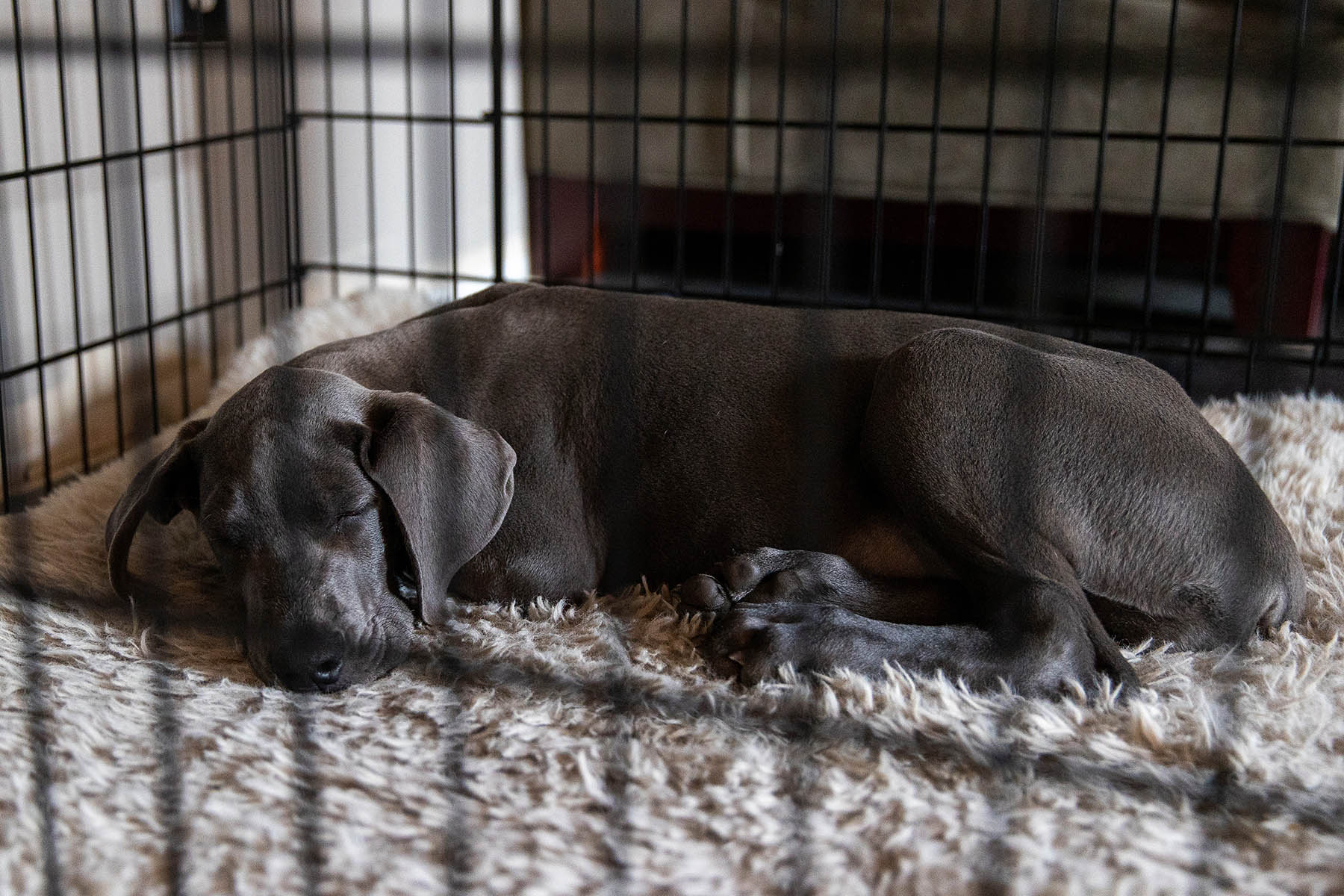Amidst the excitement of welcoming a new puppy to the home, one practical question often emerges: Where should your new puppy sleep? The answer to this question about puppy sleep arrangements is pivotal, as it sets the tone for your puppy’s comfort, security, and training routine. In this article, we delve into the various sleep arrangement options for your furry newcomer, weighing the pros and cons of each to help you make an informed decision that benefits both your puppy’s well-being and your household’s harmony. ??
Crate Training: A Secure Sleep Haven
Crate training is a method of dog training that involves using a crate or kennel as a safe, personal space for your dog. It capitalizes on the dog’s natural instinct to seek a snug, sheltered space to rest and sleep. Discover the benefits of crate training and how to make it work for your puppy:
- Benefits of Crate Training: Crate training provides a secure space for your puppy, aids in house training, and establishes a comforting den-like environment.
- Proper Crate Placement: Find out where to place the crate within your home and ensure it’s the right size for your puppy’s comfort.
- Gradual Introduction: Learn how to introduce the crate gradually and make it a positive and inviting space using treats and toys.
Bedroom Co-Sleeping: Comfort and Security
Whether a puppy should sleep in your bedroom is a decision that depends on several factors and personal preferences. Here are some points to consider:
Pros of Having a Puppy Sleep in Your Bedroom:
- Comfort and Reassurance: Puppies often feel more secure and less anxious when they’re close to their owners, especially in a new environment.
- Convenience for Nighttime Needs: It’s easier to hear and respond to a puppy if it needs to go out during the night, which is beneficial for potty training.
- Bonding: Sharing a sleeping space can strengthen the bond between you and your puppy.
Cons:
- Dependency Issues: The puppy might become overly dependent on your presence to sleep, which could be problematic if you need to be away.
- Sleep Disturbance: Puppies can be restless, and their movements or noises might disrupt your sleep.
- Long-term Commitment: If you start with allowing your puppy in your bedroom, it might expect this arrangement permanently, which can be hard to change later.
Tips for Bedroom Sleeping
- If you decide to have your puppy sleep in your bedroom, consider using a crate or bed specifically for the puppy. This helps in setting boundaries and maintaining some independence.
- Ensure that the sleeping area is safe and puppy-proofed, with no accessible hazards.
Separate Sleeping Area: Providing Independence
Opting for a separate sleeping area for your new puppy is a decision that can foster independence and self-soothing abilities in your pet. Here’s a look at the benefits and considerations of this approach:
Benefits of a Separate Sleeping Area:
- Promotes Independence: Sleeping separately helps puppies learn to be comfortable on their own, which is crucial for their development and confidence.
- Reduces Anxiety Over Time: Although it might be challenging initially, over time, it can reduce separation anxiety as the puppy gets used to spending time alone.
- Better Sleep for Both: It often leads to better sleep quality for both the owner and the puppy, as there’s no disturbance from each other’s movements or noises.
- Routine and Discipline: It helps establish a routine and a sense of discipline, as the puppy learns to understand and adapt to boundaries within the home.
Considerations and Tips:
- Prepare a Comfortable Space: Ensure the puppy’s sleeping area is comfortable, safe, and secure. It should include a bed or crate, toys, and perhaps an item with your scent for comfort.
- Gradual Adjustment: Start with short durations and gradually increase the time the puppy spends in its own space.
- Consistent Routine: Establish a consistent bedtime routine. This might include a potty break, some quiet play or cuddle time, and then settling the puppy in its sleeping area.
- Potty Training Considerations: Young puppies need to go out multiple times during the night. Be prepared for some disrupted sleep initially as you’ll need to take them out.
- Anxiety Reduction: If the puppy seems anxious, consider soothing tools like a ticking clock, soft music, or a warm water bottle to mimic the mother’s heartbeat and warmth.
Training for Separate Sleeping
- Positive Reinforcement: Use treats and praise to make the experience of sleeping alone a positive one.
- Puppy-proofing: Ensure the area is safe from hazards and has everything the puppy needs.
- Listening Out: Keep an ear out for signs of distress, especially in the early days. It’s important to differentiate between normal adjustment whining and actual distress.
Deciding where your new puppy should sleep is a crucial consideration for their well-being and your own sleep quality. Whether you choose crate training, bedroom co-sleeping, a separate sleeping area, or bed sharing, the key is to provide a comfortable and secure environment that suits both you and your furry companion. By establishing a consistent bedtime routine and being patient during the adjustment period, you can ensure a restful night’s sleep for everyone in your household.




